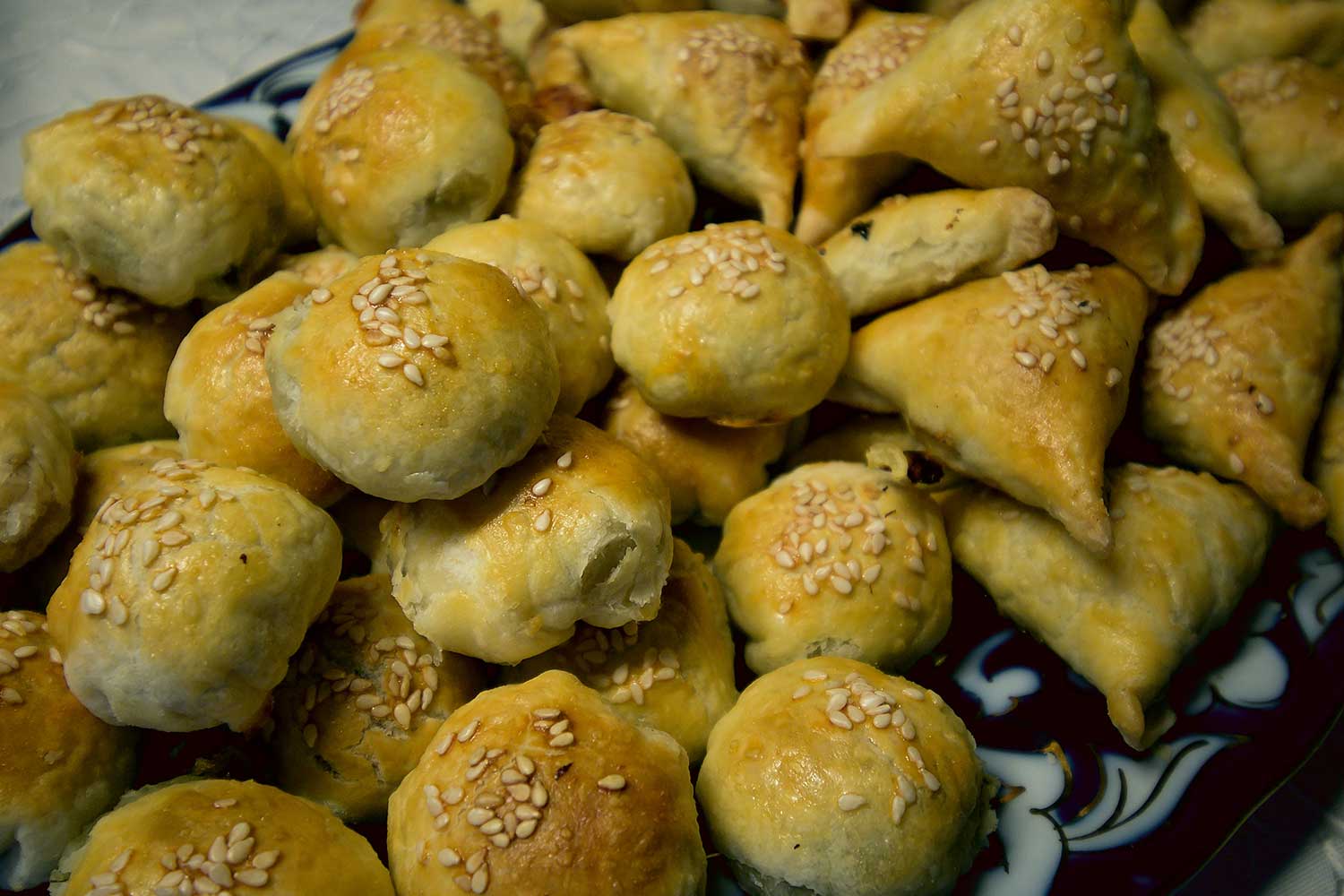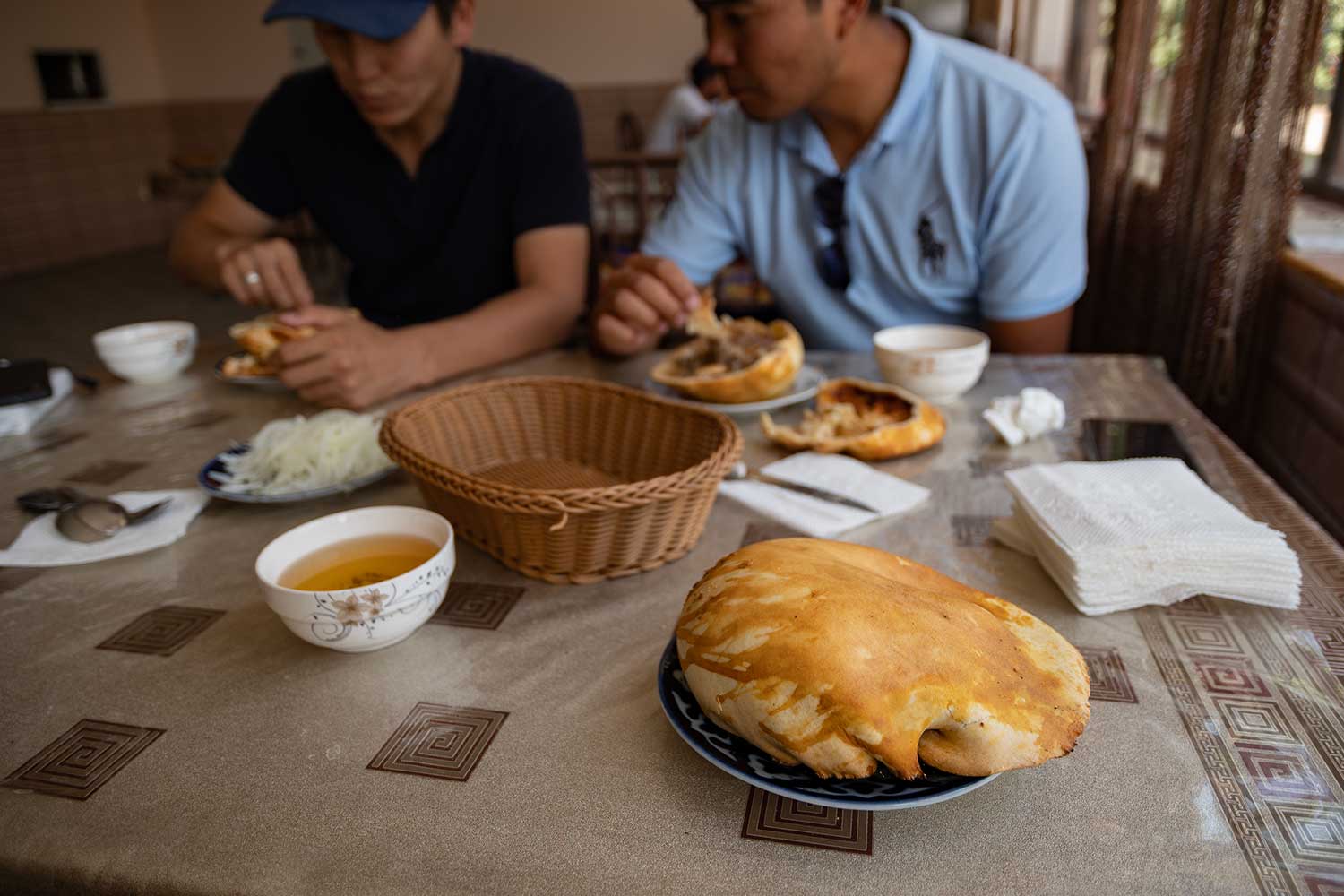Samsa is a delectable savory pastry that holds a cherished place in Central Asian cuisines, reflecting the rich culinary traditions of the region. Here are some more descriptions and insights into this mouthwatering treat:

Cultural Significance: Samsa is not just a culinary delight; it’s also a cultural icon in Central Asia. It has been a staple in the diets of people in Kazakhstan, Kyrgyzstan, Tajikistan, Turkmenistan, and Uzbekistan for centuries, making it an integral part of their food heritage.
Variety of Names: Samsa goes by various names across Central Asia, such as “somsa” in Uzbek, “sambüsa” in Tajik, and “samsa” in Kazakh, Kyrgyz, and Turkmen. These names reflect the linguistic diversity of the region.
Pastry Shell: The pastry shell of samsa can vary. It may be made from a simple bread dough or a more intricate layered pastry dough, which contributes to its unique texture and taste. The layered pastry dough is often flaky and adds a delightful crispiness to the pastry.
Meat and Vegetable Fillings: While minced lamb and onions are the classic and most common filling for traditional samsa, the dish offers a versatile canvas for other ingredients. In addition to lamb, you can find samsa stuffed with minced beef, chicken, or cheese. In some cases, seasonal vegetables like potatoes or pumpkin are used as fillings.
Cooking Method: Samsas are typically baked, and the traditional method involves baking them in a tandoor, a special clay oven. This cooking technique imparts a distinct flavor and aroma to the pastry, enhancing its overall appeal. The tandoor’s intense heat ensures that the samsa is cooked to perfection, with a golden-brown crust and juicy, flavorful filling.
Street Food Culture: Samsas are often enjoyed as a popular street food in Central Asia. You can find them at street kiosks dedicated solely to making samsa or at more diversified fast-food kiosks offering a range of items. These portable pastries are perfect for on-the-go snacking and are widely appreciated for their warm, comforting nature.
Availability: Beyond street vendors, samsas are readily available in grocery stores. Many stores purchase them from local suppliers who specialize in making these pastries. This makes samsas accessible to people who may not have the time or inclination to prepare them at home.
Seasonal Variations: Some variations of samsa incorporate seasonal ingredients, such as pumpkin or certain vegetables, when they are in season. This not only adds variety to the pastry but also highlights the connection between Central Asian cuisine and the region’s agricultural calendar.
In summary, samsa is a beloved pastry in Central Asian cuisines, celebrated for its diverse fillings, cooking methods, and cultural significance. Whether enjoyed as a quick street snack or a special treat from a local bakery, samsa offers a delightful blend of flavors and textures that captivates the taste buds of those who savor it.


